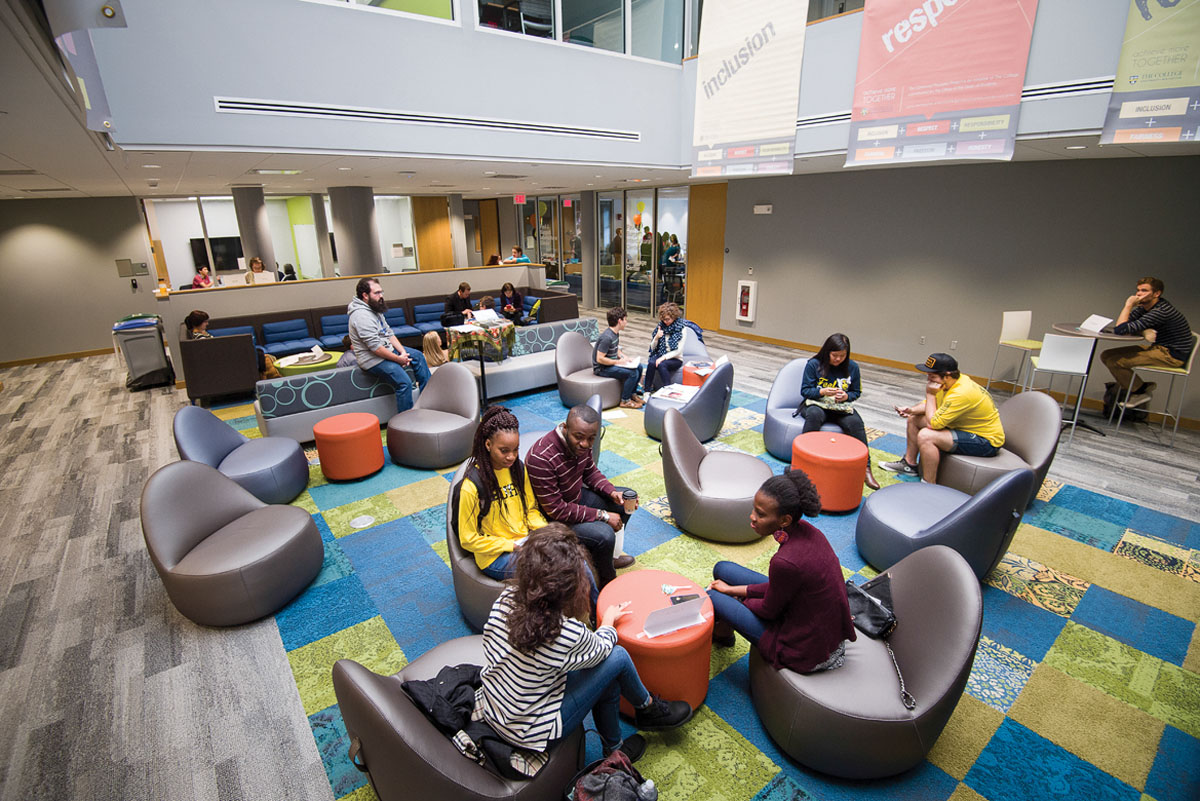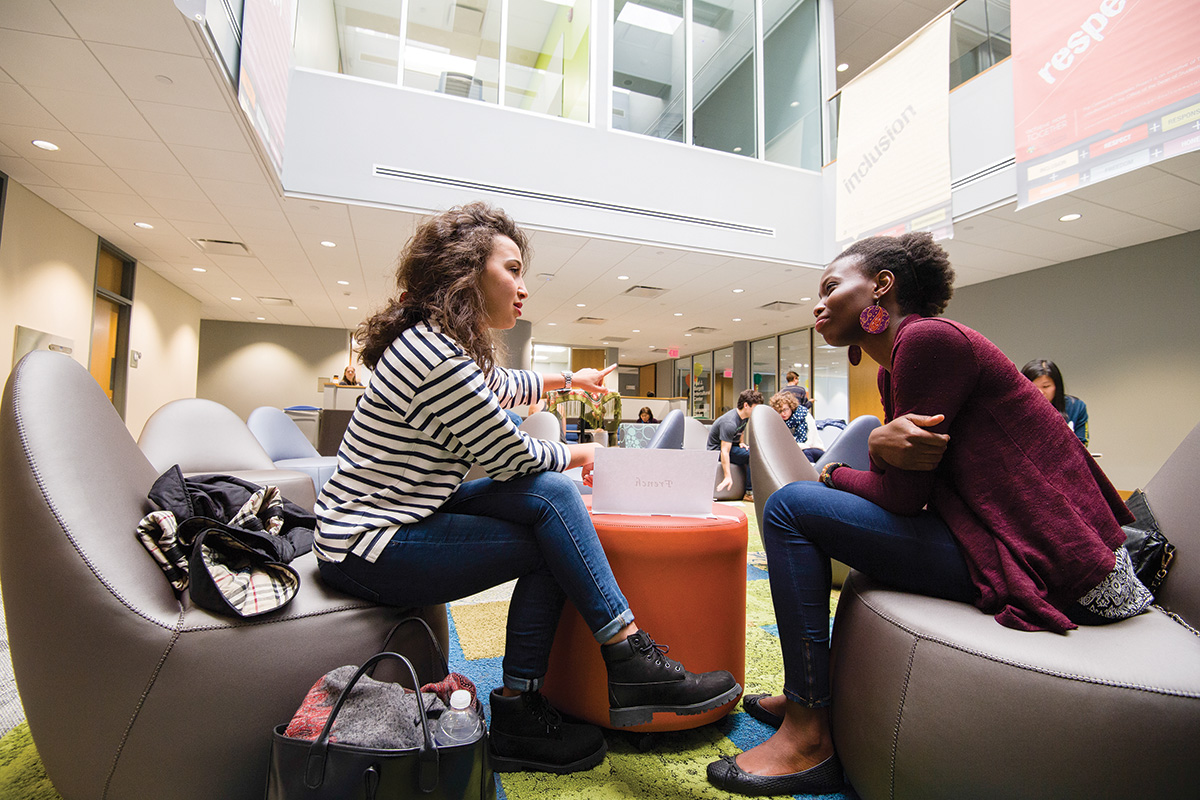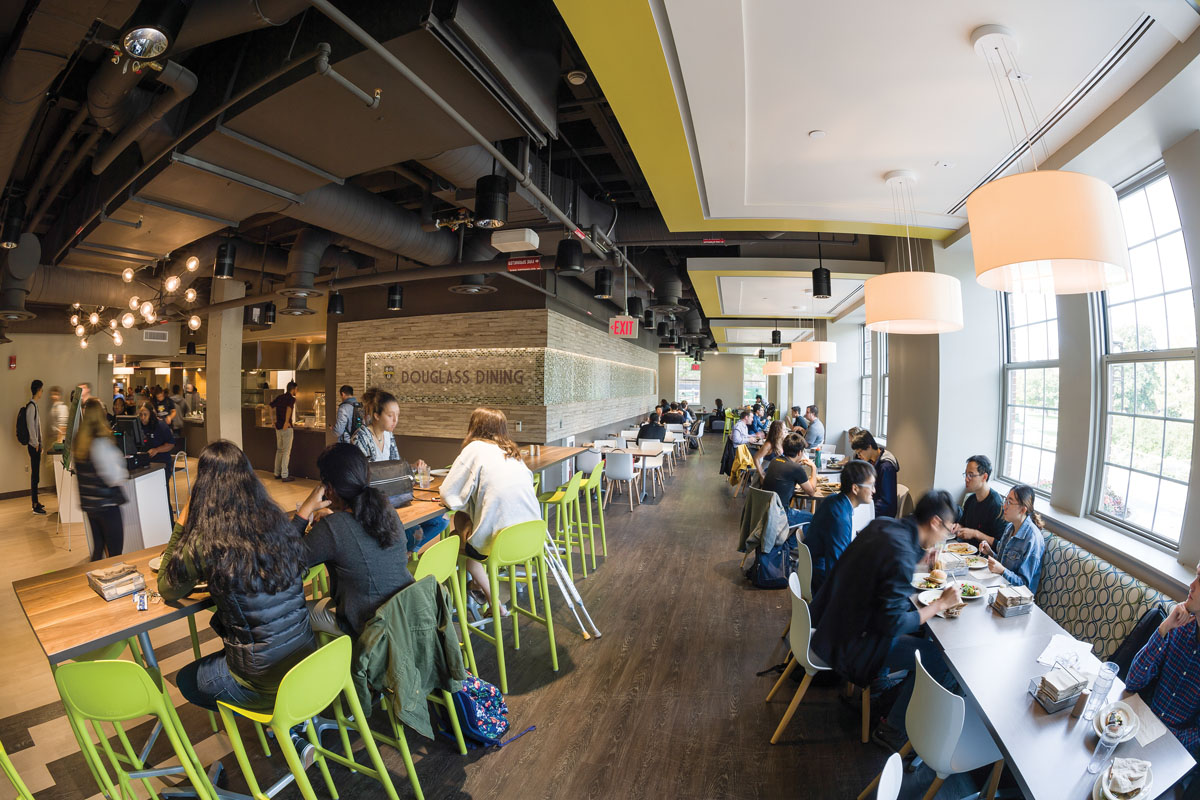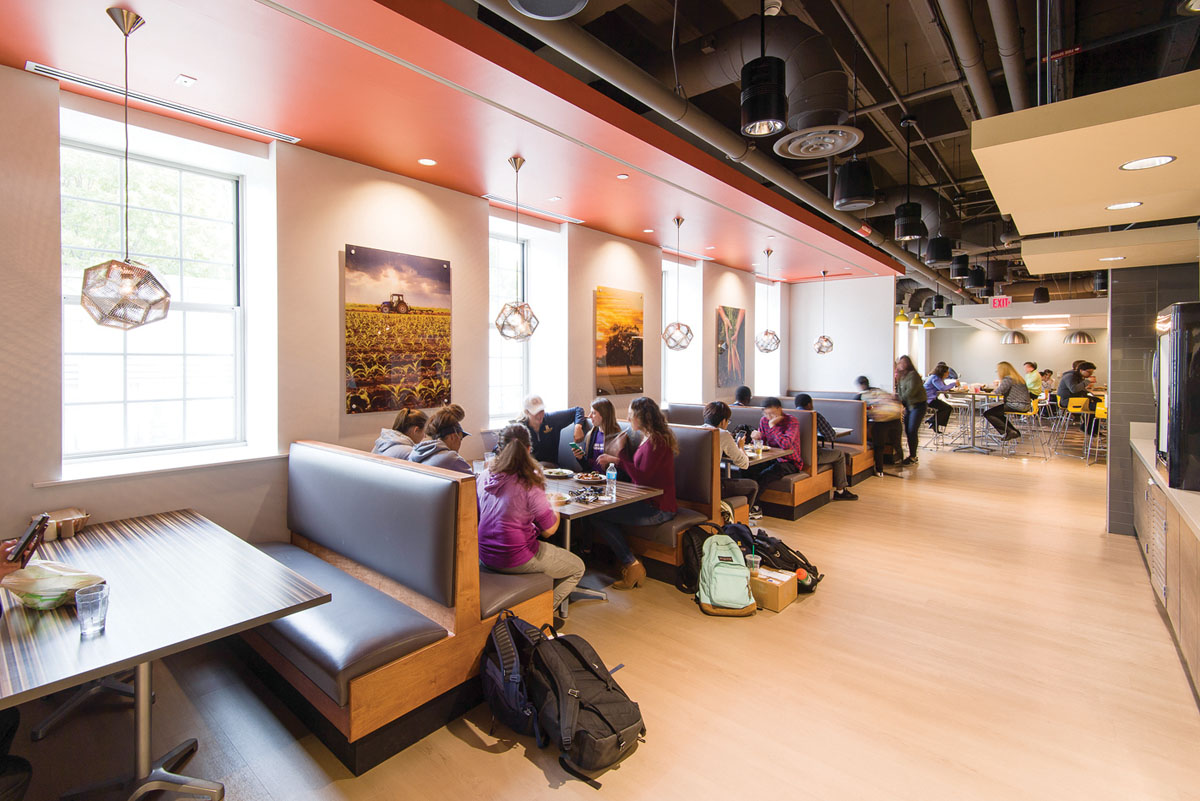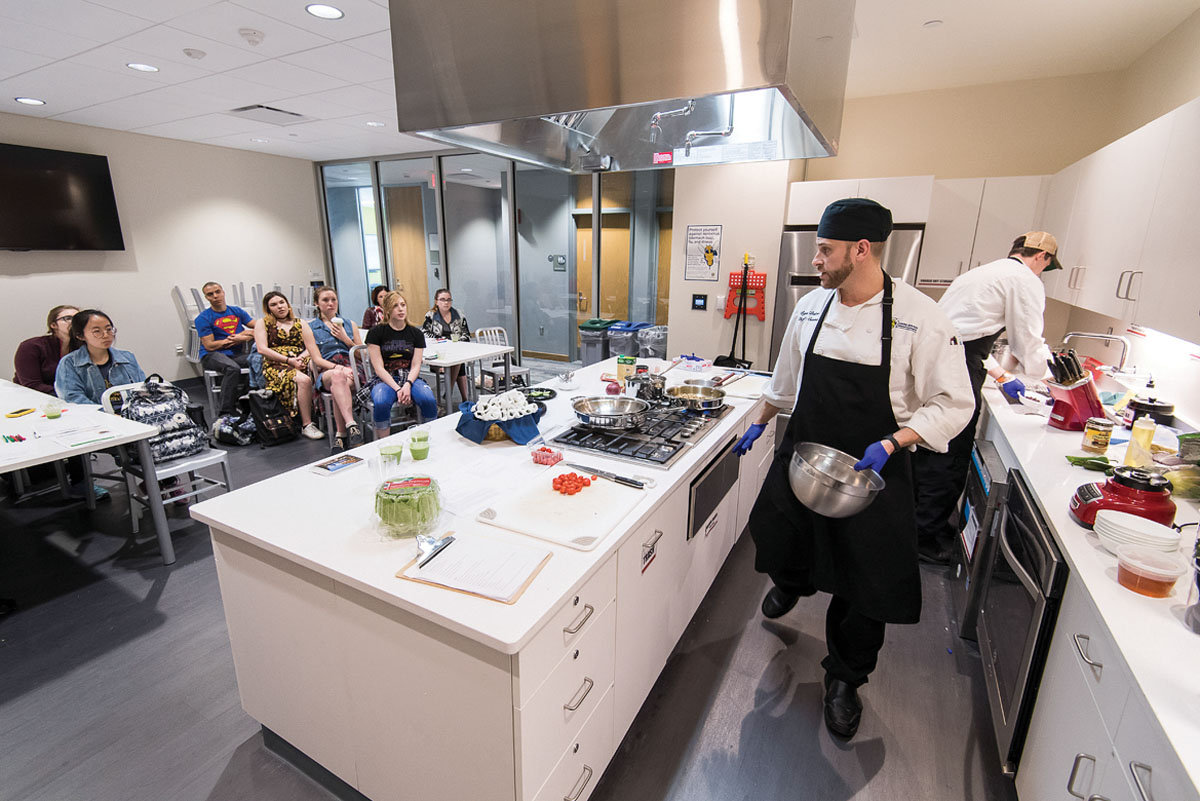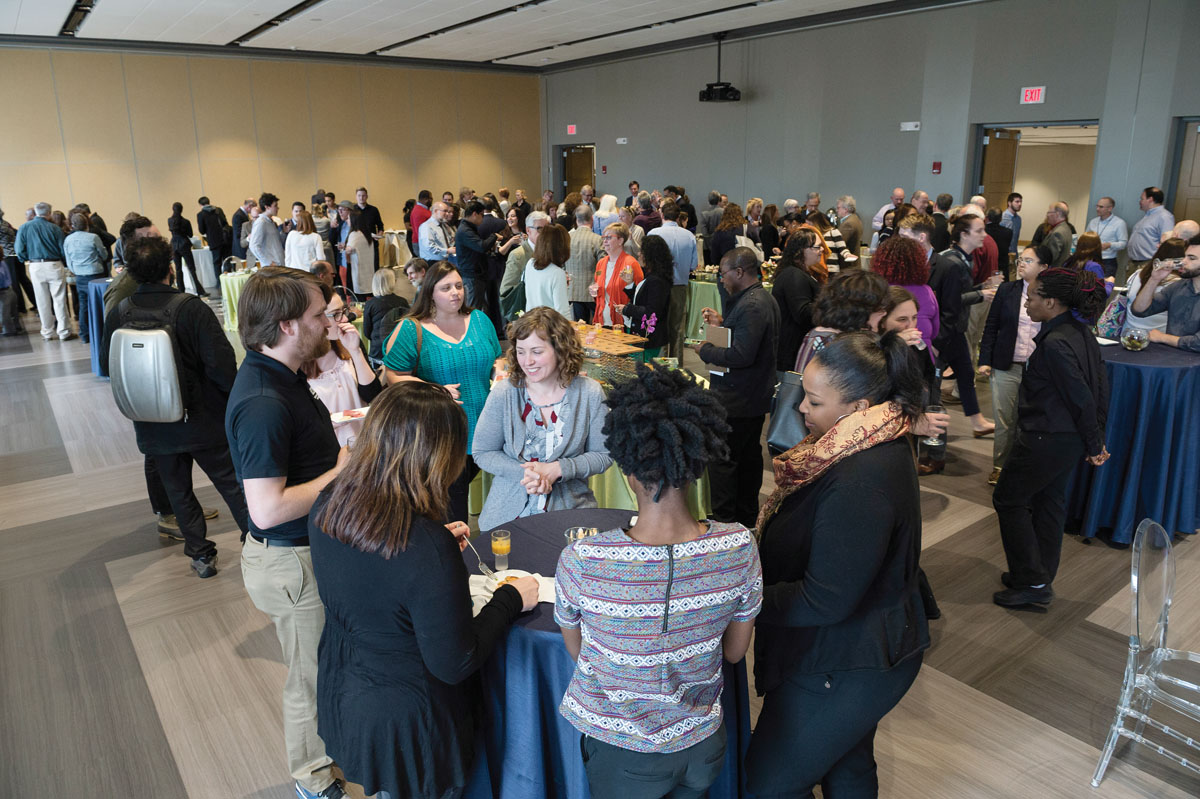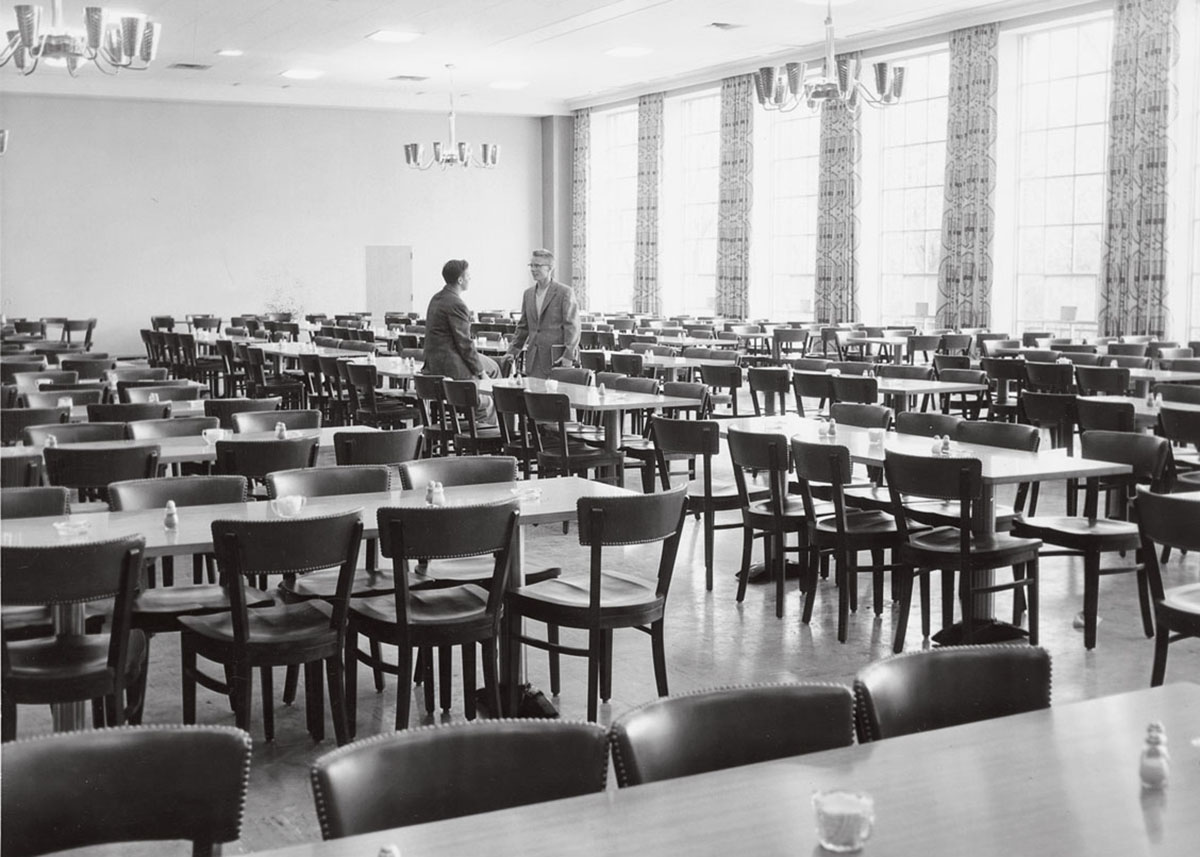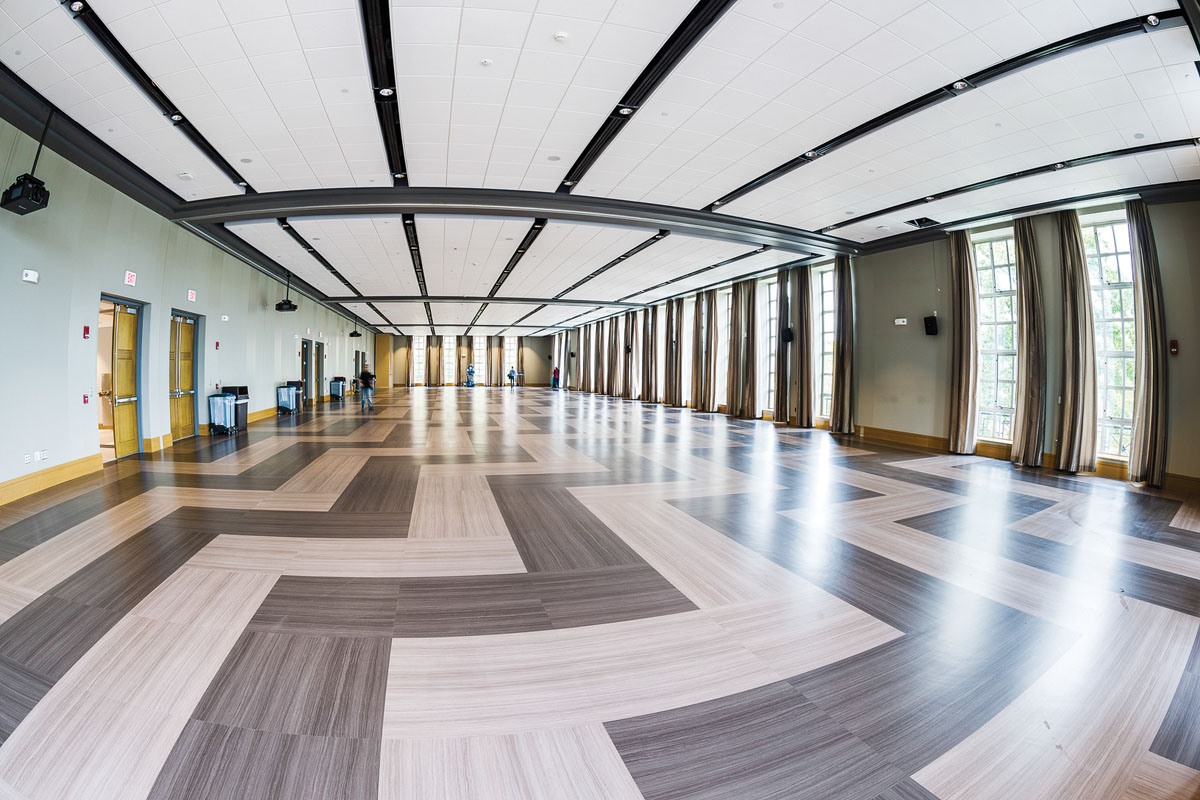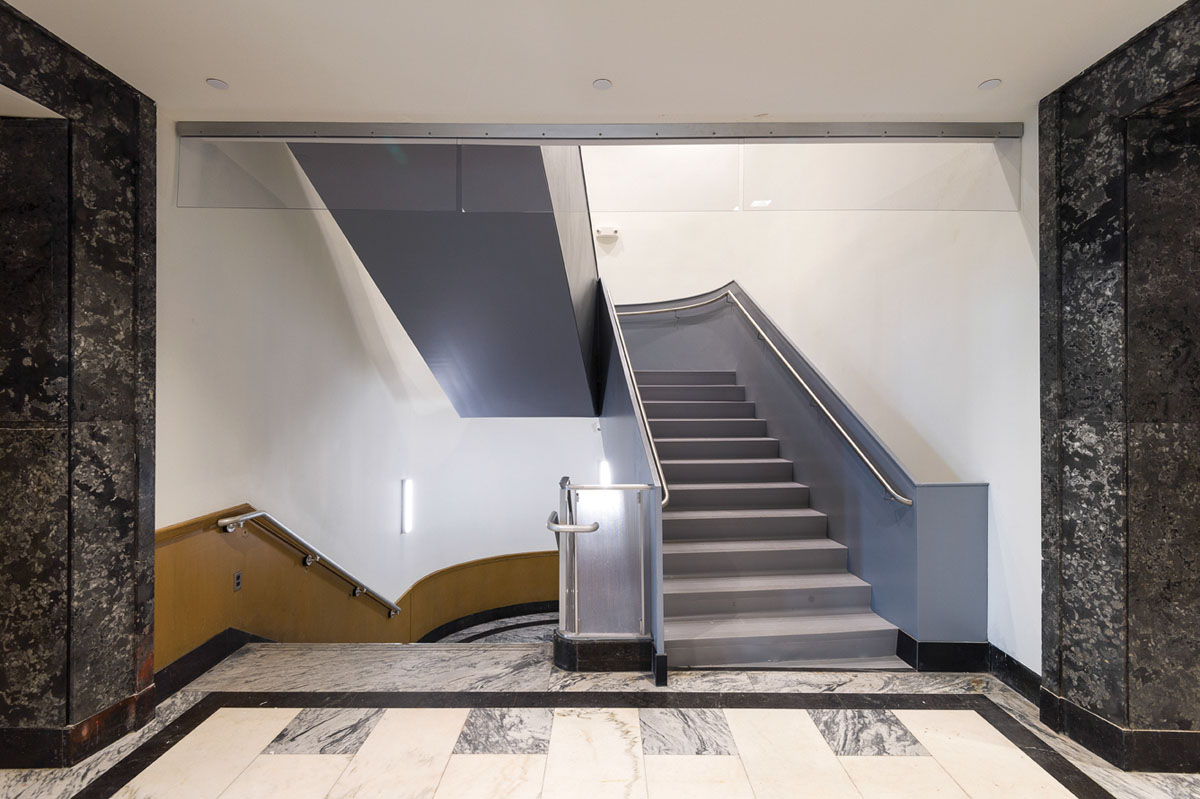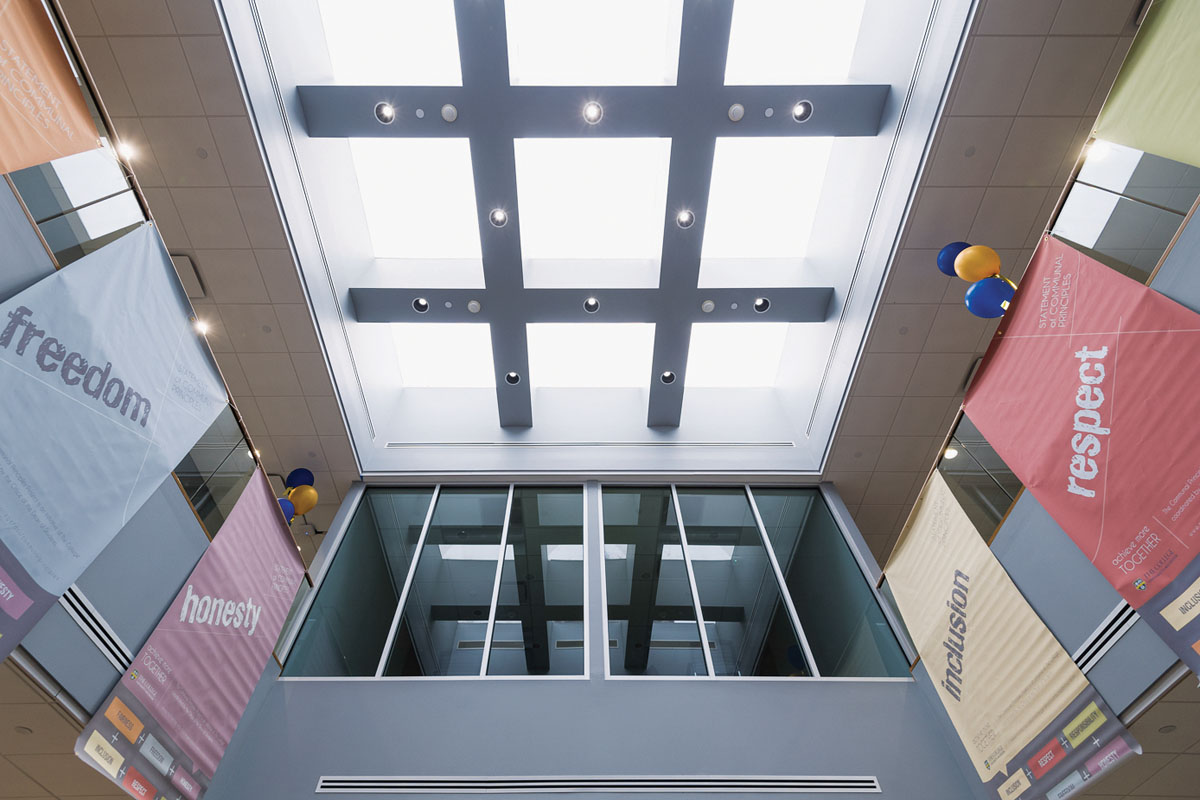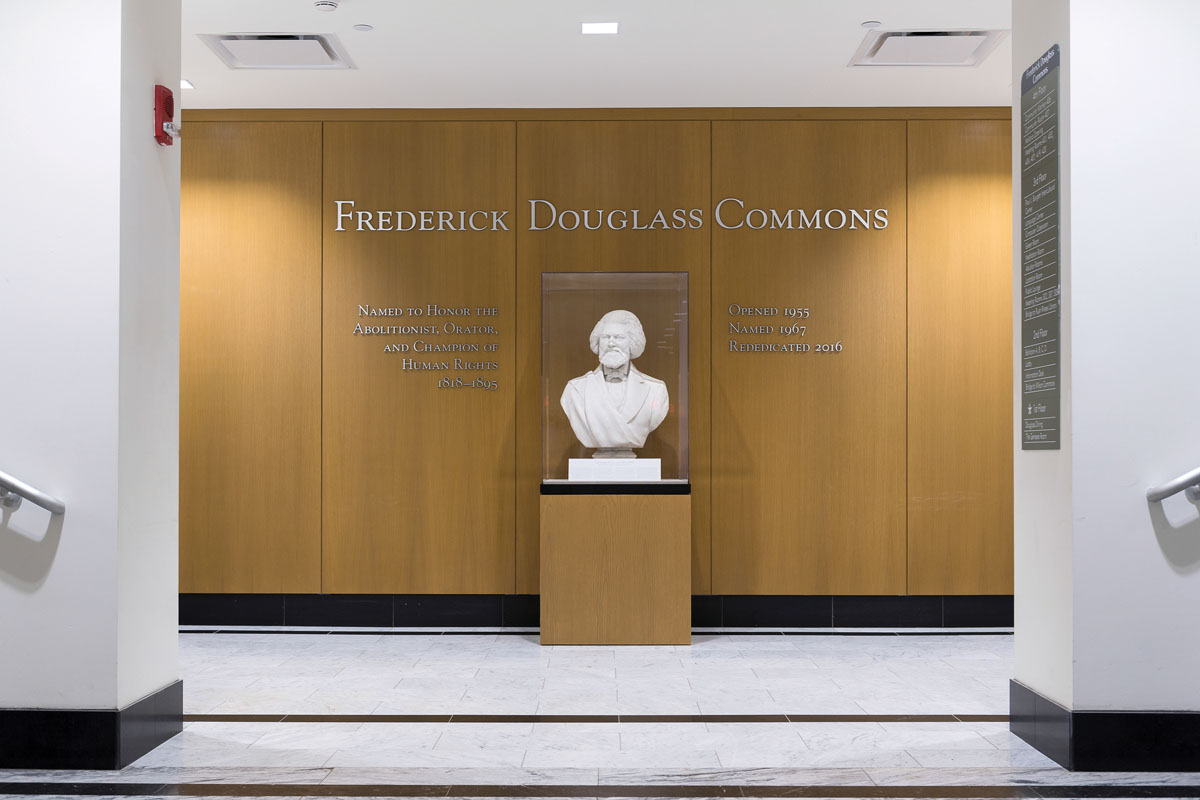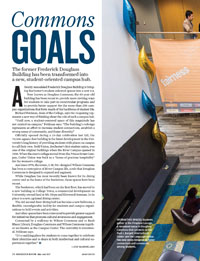Features
A freshly remodeled Frederick Douglass Building is bringing Rochester’s student-oriented spaces into a new era.
Now known as Douglass Commons, the 60-year-old building has been recast to provide more inviting ways for students to take part in cocurricular programs and to provide better support for the more than 250 campus organizations that form much of the backbone of student life.
Richard Feldman, dean of the College, says the reopening represents a new way of thinking about the role of such a campus hub.
“Until now, a student-centered space of this magnitude has not existed on campus,” Feldman says. “The building’s redesign represents an effort to increase student connections, establish a strong sense of community, and foster diversity.”
Officially opened during a 10-day celebration last fall, the 79,000-square-foot building is the latest development in the University’s long history of providing students with places on campus to call their own. Todd Union, Rochester’s first student union, was one of the original buildings when the River Campus opened in 1930. When the men’s college moved from the Prince Street Campus, Cutler Union was built as a “home of gracious hospitality” for the women’s college.
And since 1976, the iconic, I. M. Pei–designed Wilson Commons has been a centerpiece of River Campus life, a role that Douglass Commons is designed to expand and augment.
While Douglass has most recently been known for its dining center and as the home of the bookstore, those spaces have been recast.
The bookstore, which had been on the first floor, has moved to a new building in College Town, a commercial development on University-owned land at Mt. Hope and Elmwood Avenues. In its place is a new, updated dining center.
The old second-floor dining hall has become a new ballroom, a flexible, reconfigurable facility for students and campus organizations to hold events and activities.
And other spaces have been reinvented to provide greater support for initiatives that promote cultural awareness and engagement.
Connected by a walkway to Wilson Commons and to Rush Rhees Library, Douglass Commons and Wilson Commons together are known as the Campus Center. The centrality is intentional, Feldman says.
“It’s a unifying place for students to come together to celebrate their identities and to share in both intellectual and cultural experiences together.”
—Jim Mandelaro

